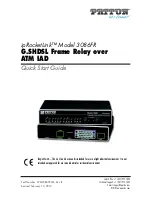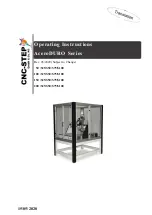
40
SATEL OY
// SATELLAR MANUAL // RADIO UNIT // USER GUIDE // V. 1.8
6. Data transmission
3
RU ‘A’ acts as a master station in this network and has the following routing table in the memory:
DTE
Route
B
2, 3, 4
C
2, 3, 5
When DTE ‘A’ sends data e.g. to DTE ‘B’ the RU ‘A’ picks the address of the DTE ‘B’ from the message and
then determines which route to use. In this example the route is the upper one, i.e. 2, 3, 4. Before send-
ing the message the RU ‘A’ adds the route to the start of the message and in addition tells that the next
receiver is station ‘D’ with address 2. All the other stations (not in the figure) except for ‘D’ that possibly
hear the message ignore it. Station ‘D’ picks the message, copies the routing data, and modifies the next
receiver indicator to point to station ‘E’ with address 3. The same procedure is repeated through the whole
chain until the message reaches the destination DTE, ‘B’ in this example.
When DTE ‘B’ replies to ‘A’ the message goes through the router chain in an opposite direction. For exam-
ple, when the reply message reaches station ‘E’, that remembers the route and forwards the message
indicating that the next receiver is station ‘D’. The route remains valid as long as the reply message has
reached the original sender. For the next message the routing information must be sent again.
How the DTE includes the address data in the message depends on the used communication protocol.
Adaptation to different protocols is done by the protocol filters that are available in SATEL NMS PC soft-
ware. These filters tell to the RU how to interpret the incoming message. No special protocol support is
needed in the RU firmware.
As explained earlier, source routing is used in polling type protocols with fixed station address length and
position in the message, based on RS-232, -422, and -485.
















































